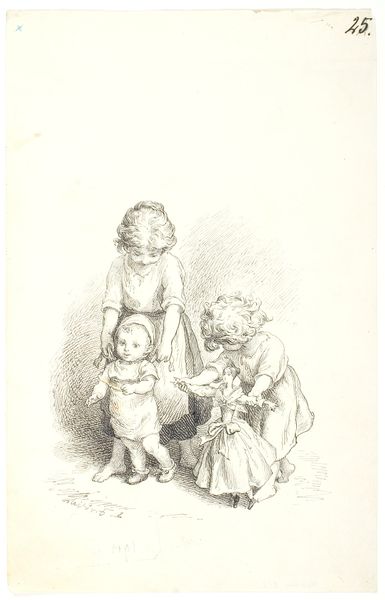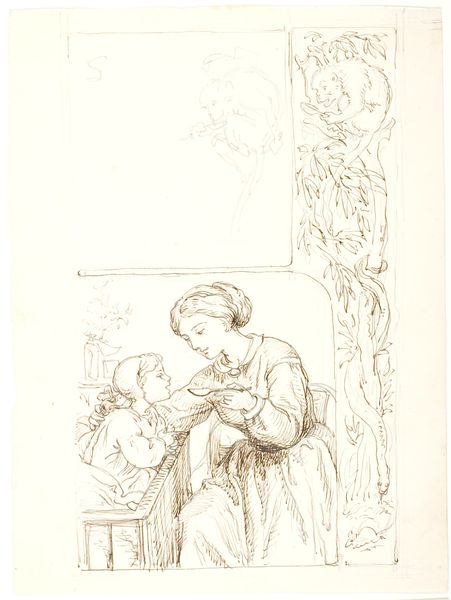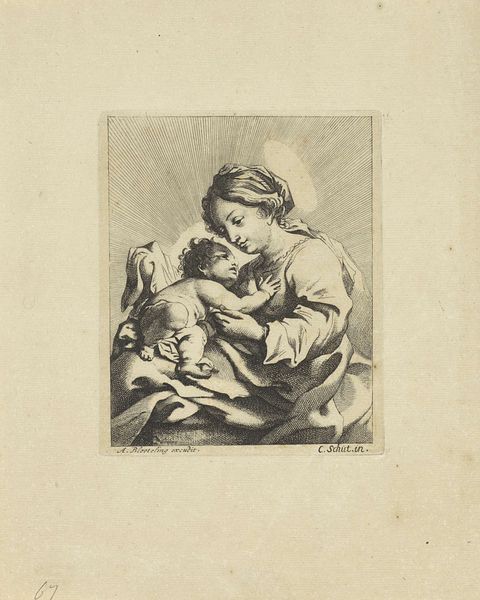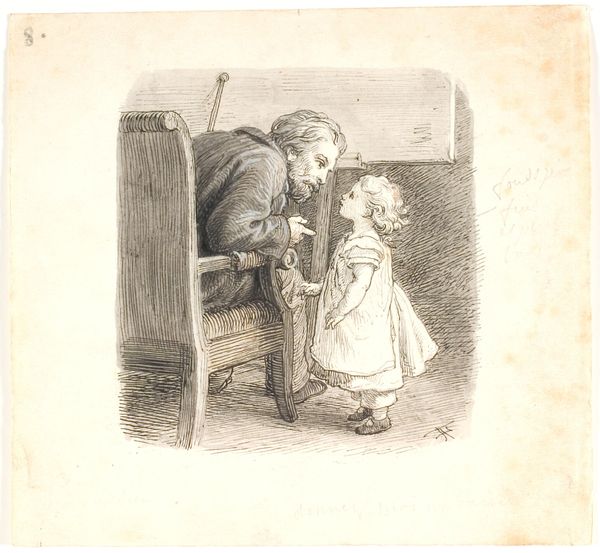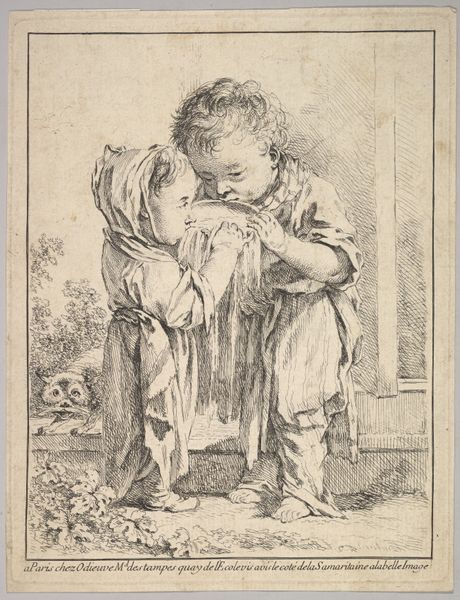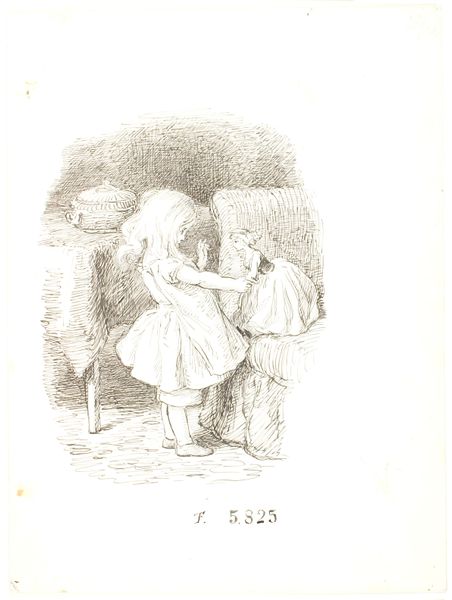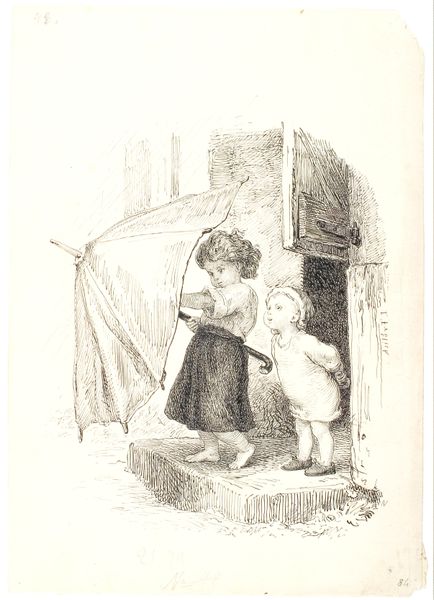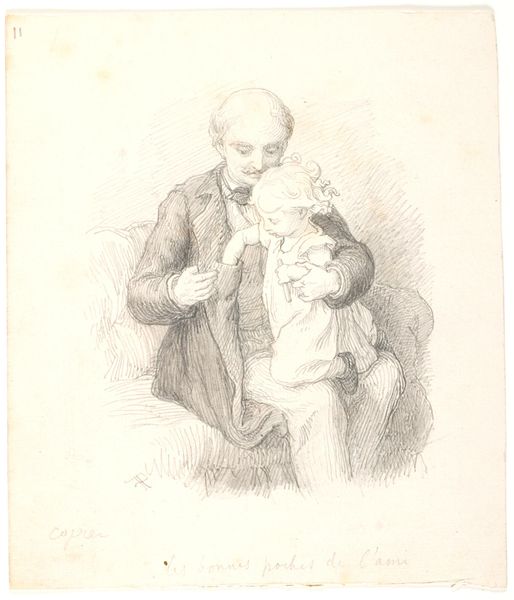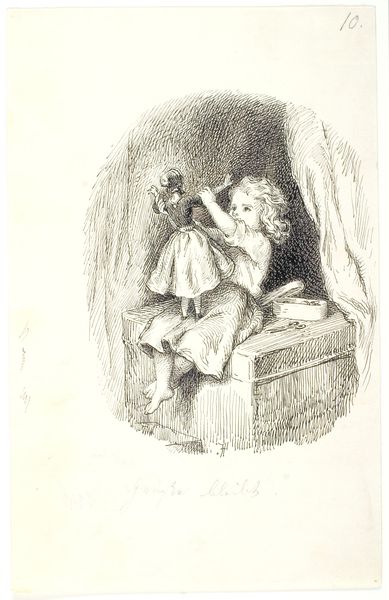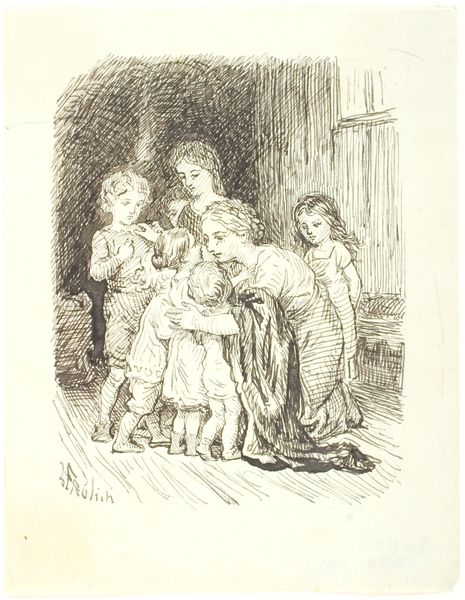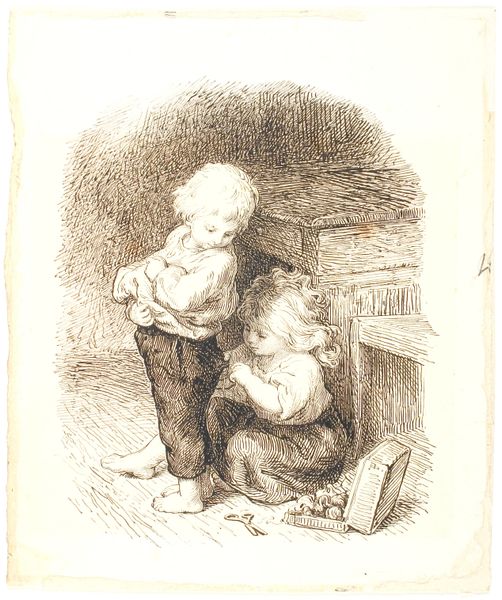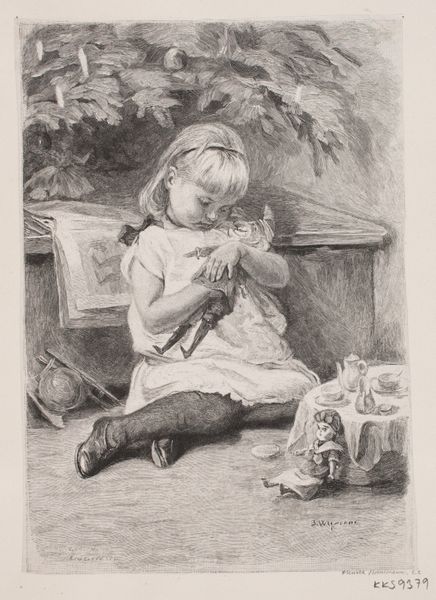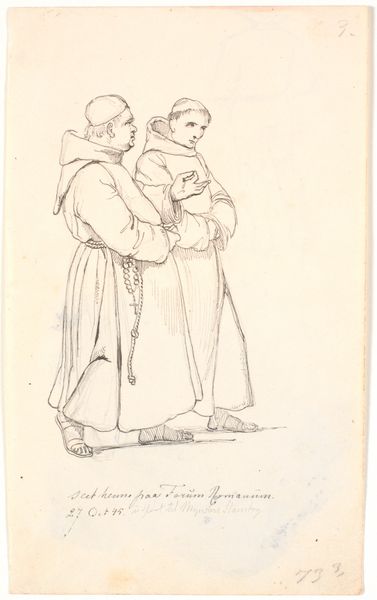
Dimensions: 209 mm (height) x 134 mm (width) (bladmaal)
Curator: At first glance, I'm struck by the solemnity of this small drawing. It evokes such a strong sense of childhood piety and quietude. Editor: Well, let’s dive into it. What we’re looking at here is a drawing entitled “To bedende børn,” which translates to “Two Praying Children." It was created sometime between 1864 and 1877 by Lorenz Frølich. The piece resides in the Statens Museum for Kunst, SMK. It's a wonderful example of 19th-century Danish Romanticism, but looking at it through a contemporary lens, it invites more questions than it answers, don't you think? Curator: Absolutely. I find myself wondering about the intended audience. This work clearly romanticizes childhood innocence and faith, concepts often deployed within a specific socio-political context. How might this image function to reinforce certain values of the time regarding family, religion, or even national identity? Editor: Exactly. Frølich’s piece plays into the prevalent societal notions. We have to remember, religious institutions wielded considerable social and political power back then. An image like this might reinforce the idea of a moral and virtuous citizenry molded through childhood religious instruction. Furthermore, the idealization of children serves to normalize patriarchal control. Curator: That's a potent observation. The formal qualities also strike me. The artist has positioned the children within a kind of oval that encloses and protects them from the outside world. The contrast is also really strong between the darkness surrounding them and the light, where we notice details such as clothes or hand gestures, almost signaling something very intimate. What else catches your eye? Editor: As a historian, I notice how the sentimental depiction of children, especially in genre painting, gains popularity in the 19th century. Consider how artworks depicting childhood piety are presented to the public via exhibitions, printed reproductions, and engravings. So, the market value of this kind of work speaks to something, like some public desire. I am wondering what role gender plays in these interactions… Curator: I couldn't agree more. This drawing is certainly more complex than its initial innocent portrayal might suggest. It’s a powerful demonstration of the politics inherent within ostensibly simple depictions of childhood. Editor: Absolutely. Seeing this image also makes you wonder what values it transmitted and which agendas it fulfilled. Always good to ponder on that when appreciating the arts, isn't it?
Comments
No comments
Be the first to comment and join the conversation on the ultimate creative platform.

